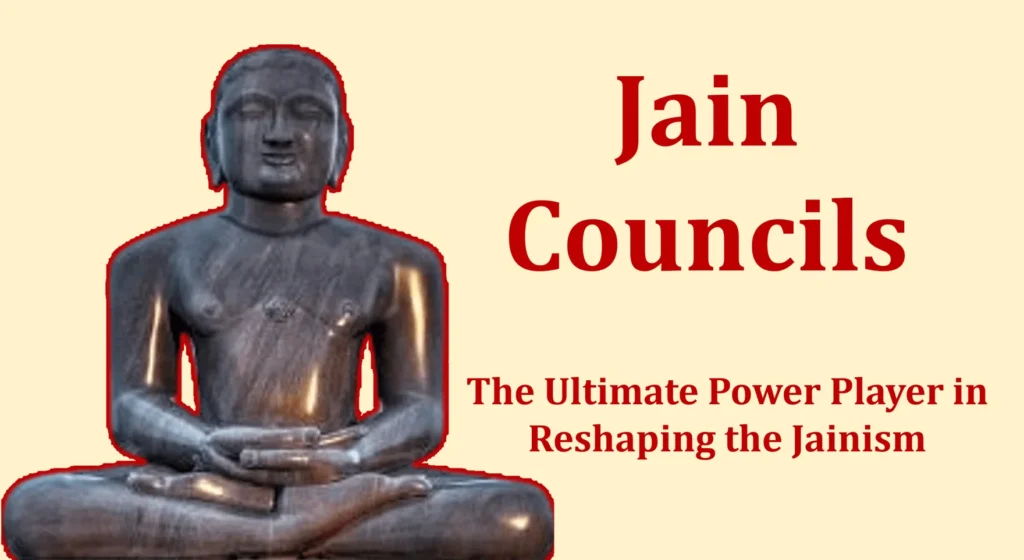
Introduction
Brief Overview of Jainism
The ancient Indian religion of Jainism places a strong emphasis on abstinence, truth, and nonviolence. Founded in the 6th century BCE, Jainism’s spiritual lineage includes 24 Tirthankaras, spiritual teachers who have achieved liberation and guide others on the path to enlightenment. The most revered among them is Mahavira, the 24th Tirthankara, who lived in the same era as the Buddha. Jain teachings advocate for strict ethical conduct, renunciation of worldly attachments, and the pursuit of spiritual purity through self-discipline and meditation.
Importance of Jain Councils in Jain History
Jain councils have played a crucial role in preserving and codifying Jain teachings, scriptures, and practices. These assemblies were convened to address doctrinal disputes, standardize religious texts, and ensure the accurate transmission of Jain wisdom across generations. The councils were instrumental in compiling the Jain Agamas, the canonical scriptures that form the foundation of Jain religious literature. They also helped resolve sectarian differences and maintain the unity and integrity of the Jain community. The decisions made in these councils have had a lasting impact on Jain philosophy, rituals, and monastic life, solidifying the core principles that guide Jains today.
Historical Background of Jainism
Origins and Foundational Principles of Jainism
Jainism is one of the oldest religions in the world, with roots tracing back to the early civilization of the Indian subcontinent. It emerged as a distinct religious tradition around the 6th century BCE, although its spiritual heritage claims a much older lineage. Jainism is fundamentally a path of spiritual purity and enlightenment, emphasizing a disciplined life of non-violence (ahimsa), truth (satya), non-stealing (asteya), chastity (brahmacharya), and non-possessiveness (aparigraha). These principles form the core ethical code for both laypersons and monastics within the Jain community.
The ultimate goal in Jainism is to achieve liberation (moksha) from the cycle of birth, death, and rebirth (samsara). This liberation is attained through the purification of the soul, achieved by strict adherence to ethical principles, rigorous ascetic practices, and deep meditation. The soul, according to Jain belief, is inherently pure but becomes tainted by karma through actions, thoughts, and desires. By living a life of virtue and renunciation, Jains aim to shed their accumulated karma and realize the soul’s true, unblemished nature.
Key Figures in Early Jainism
Mahavira
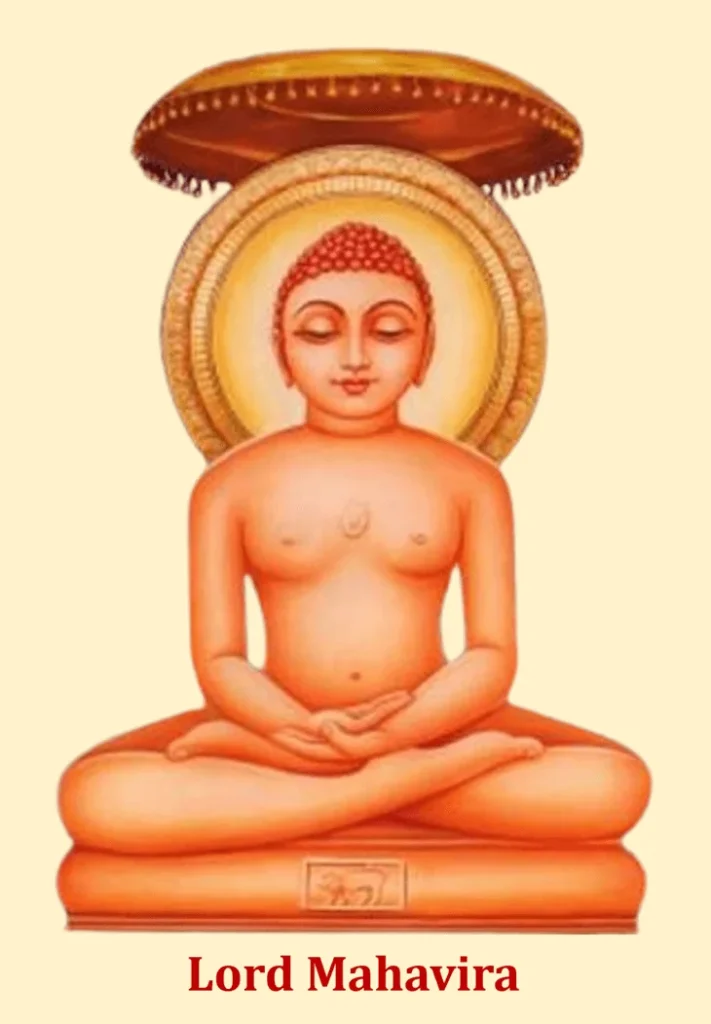
Mahavira, also known as Vardhamana, is the 24th and last Tirthankara in the Jain tradition. Born in 599 BCE in the region of modern-day Bihar, India, Mahavira was a contemporary of the Buddha and played a crucial role in defining the teachings and practices of Jainism as it is known today. He renounced his princely life at the age of 30 to seek spiritual awakening. After 12 years of intense asceticism and meditation, he attained Kevala Jnana (omniscience) and spent the rest of his life teaching the path to liberation.
Mahavira’s teachings emphasized the five great vows (mahavratas) for ascetics: non-violence, truthfulness, non-stealing, chastity, and non-possessiveness. For lay followers, he prescribed a set of 12 vows (anuvratas) that are more moderate yet aligned with the same ethical principles. His discourses were compiled into the Jain Agamas, forming the scriptural backbone of Jain philosophy and law.
Parshvanatha

Parshvanatha, or Parshva, is the 23rd Tirthankara, who is believed to have lived approximately 250 years before Mahavira. Historical records and legends place his birth in Varanasi (Benares), in a princely family. Like Mahavira, Parshvanatha renounced worldly life to pursue spiritual enlightenment, eventually achieving Kevala Jnana.
Parshvanatha’s teachings laid the groundwork for Jainism and were instrumental in shaping its early doctrinal framework. He is credited with promoting the fourfold restraint (chaturyama) which includes non-violence, truth, non-stealing, and non-attachment. These precepts were later expanded by Mahavira to include the vow of chastity, making up the five major vows followed by Jain ascetics.
Parshvanatha’s influence is evident in the continuity and development of Jain doctrines. His emphasis on non-violence and asceticism strongly resonated with subsequent generations, setting the stage for Mahavira’s comprehensive elaboration of these principles. Parshvanatha’s legacy remains vital to the Jain faith, with many temples and texts venerating him as a pivotal figure in Jain history.
The Concept of Jain Councils
What are Jain Councils?
Jain councils are formal assemblies convened by the Jain community to discuss, compile, and codify religious teachings, scriptures, and practices. These councils are significant events in Jain history, bringing together leading monks, scholars, and community leaders to address doctrinal disputes, standardize texts, and ensure the proper transmission of Jain teachings across generations. They play a crucial role in preserving the integrity and continuity of Jain philosophy and practices, often resulting in the compilation and reaffirmation of canonical literature.
Origin and Evolution of Jain Councils
The tradition of holding councils has a long history in Jainism, reflecting the community’s commitment to maintaining doctrinal purity and unity. The origin of Jain councils can be traced back to the need for systematically organizing and preserving Jain scriptures and teachings.
- First Jain Council (3rd century BCE): The first major council was held in Patliputra (modern-day Patna) around the 3rd century BCE. It was organized in response to the need for compiling and preserving the oral teachings of Mahavira, which were at risk of being lost. The council aimed to collect these teachings into a coherent body of scripture, resulting in the initial compilation of the Jain Agamas.
- Second Jain Council (5th century CE): The second significant council took place in Vallabhi (modern-day Gujarat) in the 5th century CE. This council was convened to further codify the Jain scriptures, address discrepancies in textual transmission, and resolve doctrinal disputes that had arisen over time. It played a crucial role in ensuring that the Jain texts were preserved in written form, solidifying the scriptural foundation of Jainism.
- Subsequent Councils and Meetings: Over the centuries, various other councils and assemblies have been held to address specific issues within the Jain community, including sectarian differences between the Digambara and Svetambara sects, the interpretation of scriptures, and the codification of monastic rules. Each council has contributed to the evolution and adaptation of Jain practices in response to changing historical and cultural contexts.
Significance of Jain Councils in Jainism
Jain councils have been instrumental in shaping the religious, philosophical, and social dimensions of Jainism. Their significance can be understood in several key aspects:
- Preservation of Teachings: Councils have played a vital role in preserving the teachings of Mahavira and other Tirthankaras. By compiling oral traditions into written texts, these councils have ensured the accurate transmission of Jain doctrine across generations, preventing the loss or distortion of sacred knowledge.
- Standardization of Scriptures: The councils have been essential in standardizing Jain scriptures, creating a unified body of texts that are recognized and respected across different Jain communities. This standardization has helped maintain doctrinal coherence and unity within Jainism, despite the existence of various sects and schools of thought.
- Resolution of Doctrinal Disputes: Councils have provided a platform for addressing and resolving doctrinal disputes and differences within the Jain community. By bringing together leading scholars and monks, councils have facilitated dialogue and consensus-building, helping to clarify and solidify key aspects of Jain philosophy and practice.
- Promotion of Unity and Cohesion: By convening representatives from diverse regions and sects, Jain councils have promoted a sense of unity and cohesion within the Jain community. They have fostered a collective identity and shared purpose, reinforcing the bonds that connect Jains across different geographical and cultural contexts.
- Guidance for Monastic and Lay Communities: The outcomes of Jain councils have provided guidance for both monastic and lay communities, establishing clear guidelines for ethical conduct, ritual practices, and monastic discipline. This guidance has helped maintain the spiritual and ethical standards of Jainism, ensuring the integrity of its practice.
Jain councils have been pivotal in preserving and shaping Jainism over the centuries. They have ensured the continuity and purity of Jain teachings, provided a framework for resolving doctrinal issues, and fostered unity within the Jain community. Their legacy continues to influence Jain practices and beliefs, underscoring their enduring importance in the history of Jainism.
The First Jain Council
Time and Location
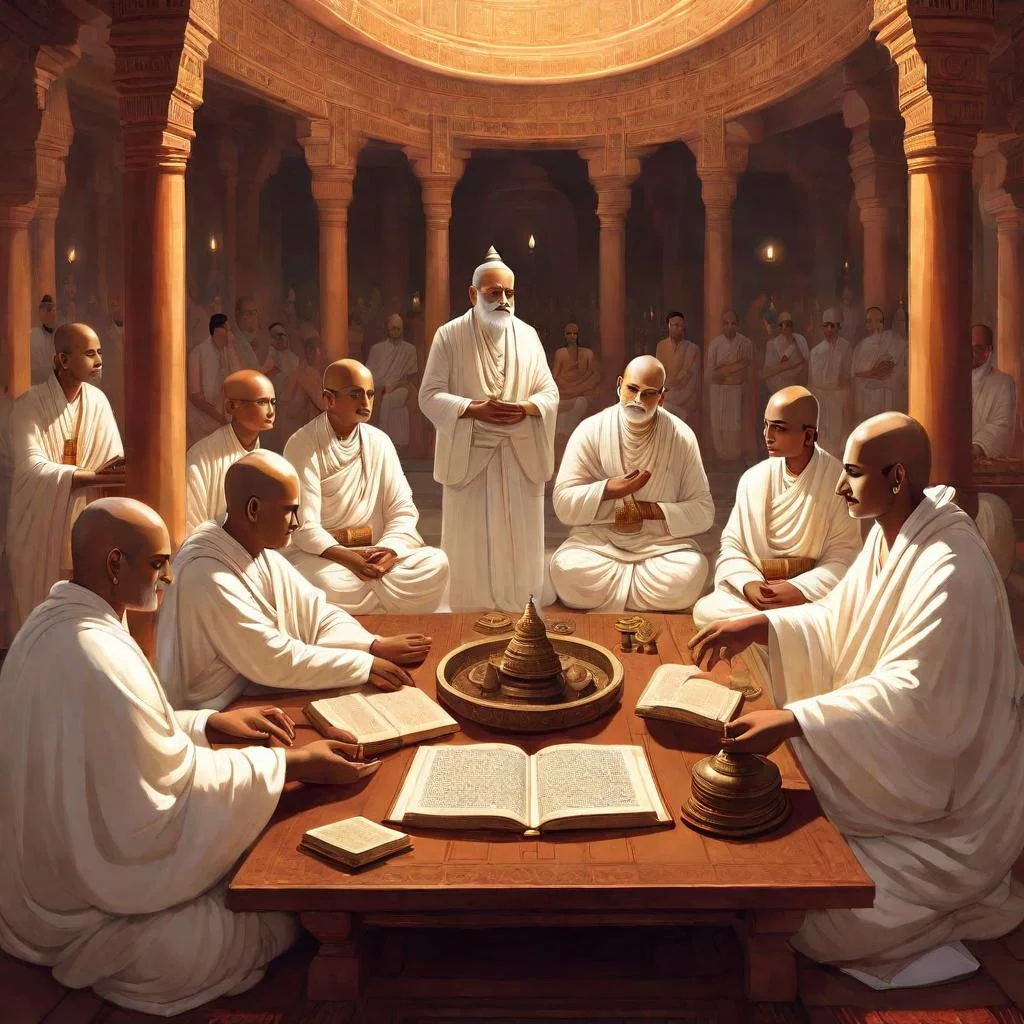
The First Jain Council was convened in the early 3rd century BCE, around 300 BCE, in the ancient city of Patliputra (modern-day Patna, Bihar). This significant event took place during the reign of the Nanda King and was closely tied to the socio-political and environmental conditions of the time.
Key Figures and Participants
The council was administered by two prominent Jain Theras (senior monks): Sambhutavijaya, also known as Sthulabahu, and Bhadrabahu. Bhadrabahu, a contemporary of the Mauryan King Chandragupta Maurya, was the sixth Thera and an influential figure in Jainism. Sthulabhadra, who played a pivotal role in organizing the council, became a key leader in the Jain community, particularly among the Svetambaras.
The council saw the participation of various monks and scholars who were dedicated to preserving the teachings of Mahavira. Bhadrabahu and his disciples had migrated to Sravanabelgola in Karnataka due to a severe famine in south Bihar, leaving the remaining Jains in Magadha under the leadership of Sthulabhadra.
Objectives and Outcomes
Compilation of Scriptures
The primary objective of the First Jain Council was to compile and preserve the sacred teachings of Mahavira. This need arose due to the challenges posed by the famine and the subsequent migration of many monks, which threatened the oral transmission of these teachings.
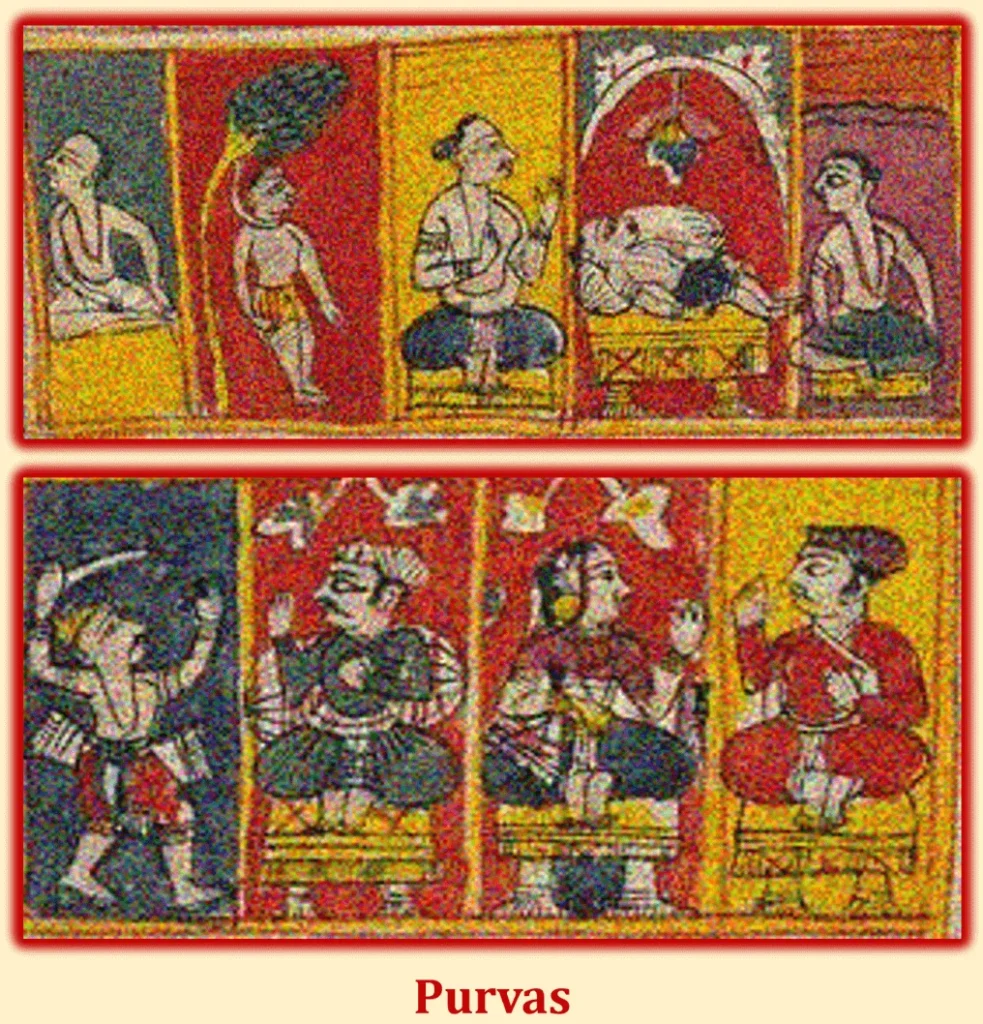
During the council, Sthulabhadra took the initiative to compile the teachings into written form. This effort led to the division of Mahavira’s teachings into fourteen sections known as Purvas. These were written in Ardhamagadhi Prakrit, a language understood by the monks and laypersons of that era, ensuring that the teachings were accessible and could be preserved for future generations.
Establishment of Canonical Texts
The establishment of these fourteen Purvas as canonical texts was a significant outcome of the First Jain Council. These texts became the foundational scriptures of the Svetambara sect, encapsulating the core teachings and philosophies of Jainism as propagated by Mahavira. The Angas cover various aspects of Jain doctrine, ethics, cosmology, and monastic conduct.
The council’s efforts to formalize these teachings into a structured canon helped standardize Jain religious practices and provided a basis for future theological and philosophical developments within the Jain community. This standardization was crucial in maintaining doctrinal integrity and continuity in the face of changing socio-political landscapes and internal challenges.
Sectarian Division
Despite the success in compiling and establishing the canonical texts, the First Jain Council also marked the beginning of a significant informal sectarian division within Jainism. The monks from the southern region, led by Bhadrabahu, disagreed with the compilation and the changes introduced by Sthulabhadra. This disagreement led to the first major schism in Jainism, resulting in the formation of two distinct sects: the Svetambaras and the Digambaras.
The Svetambara sect accepted the compilation of the fourteen Purvas and adopted the practice of wearing white robes. In contrast, the Digambara sect, led by Bhadrabahu, rejected this compilation and adhered to more austere practices, including the renunciation of all clothing. This division had profound implications for the development of Jain practices and philosophies, leading to distinct ritualistic and doctrinal differences between the two sects.
The First Jain Council at Patliputra was a landmark event in Jain history. It played a crucial role in preserving and codifying the teachings of Mahavira, ensuring their transmission to future generations. Despite the sectarian division it precipitated, the council’s outcomes were foundational in shaping the religious and philosophical landscape of Jainism.
The Second Jain Council
Time and Location
The Second Jain Council took place in 512 CE in the city of Vallabhi, located in present-day Gujarat. This significant event occurred during the reign of the Maitraka Dynasty, a period marked by cultural and intellectual flourishing in the region.
Key Figures and Participants
The council was presided over by Devardhi Kshemasarmana, a prominent Jain monk and scholar. He played a crucial role in leading the deliberations and ensuring the successful outcomes of the council. The assembly included various esteemed monks and scholars from different Jain communities who were committed to the preservation and codification of Jain teachings.
Objectives and Outcomes
Further Codification of Texts
One of the primary objectives of the Second Jain Council was to systematically collect and codify the sacred texts of Jainism. This effort was necessary to address the challenges posed by the loss and fragmentation of oral traditions over time. The council aimed to ensure that the teachings of Mahavira and other Jain Tirthankaras were accurately preserved and accessible to future generations.
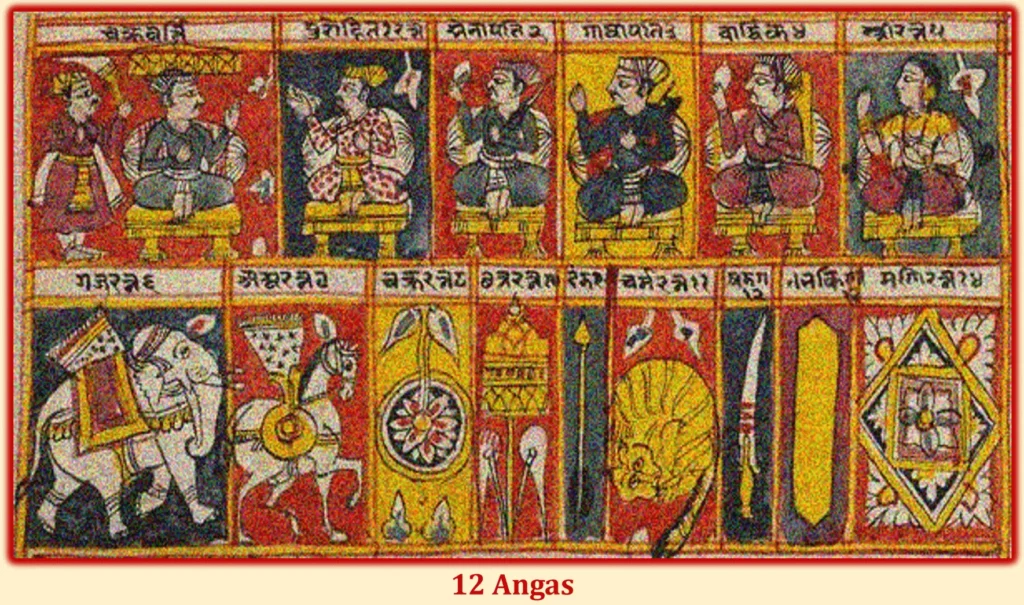
During the council, the existing canonical texts in form of fourteen Purvas, were meticulously converted into twelve separate texts known as Anga and written down in Ardhamagadhi Prakrit. However, it was noted that the 12th Anga, Dristivada, had been lost by this time. Despite this loss, the council succeeded in organizing and codifying the remaining eleven Angas, which cover various aspects of Jain doctrine, ethics, and monastic life. Additionally, new texts known as Upangas, or minor sections, were added to the canon, further enriching the Jain literary tradition.
Resolving Doctrinal Disputes
Another critical objective of the Second Jain Council was to address and resolve doctrinal disputes that had arisen within the Jain community. Differences in interpretation and practice had led to the formal sectarian divisions but the council sought to reconcile these differences to maintain unity and coherence within Jainism.
The council’s discussions and decisions helped clarify doctrinal ambiguities and established a more uniform understanding of Jain teachings. By providing authoritative interpretations of key texts and doctrines, the council contributed to reducing factionalism and promoting a cohesive religious identity among Jains.
Maintaining Written Records of Oral Traditions
A significant outcome of the Second Jain Council was the transition of Jain teachings from oral to written form. This was a crucial step in preserving the rich oral traditions that had been passed down through generations of Jain monks and scholars. Writing down these teachings ensured their longevity and protected them from the distortions and losses that could occur through oral transmission alone.
The council’s efforts led to the creation of a comprehensive written canon, including both the Angas and the Upangas. The Angas, such as the Acaranga Sutra and the Bhagavati Sutra, are particularly noteworthy. The Acaranga Sutra deals with the code of conduct for Jain monks, emphasizing ethical discipline and ascetic practices. The Bhagavati Sutra, on the other hand, provides an in-depth exposition of Jain doctrines, covering a wide range of philosophical and theological topics.
The twelve Upangas added during the council include texts such as Uvavaiya-sutta, Raya-pasenaijja, Jivajivabhigama, and others, each contributing to the breadth and depth of Jain literature. These texts cover various themes, from cosmology and geography to ethics and metaphysics, providing a holistic understanding of Jain teachings.
The Second Jain Council at Vallabhi was a landmark event in the history of Jainism. It played a pivotal role in preserving and codifying the sacred texts, resolving doctrinal disputes, and transitioning oral traditions into written form. The council’s efforts ensured the continuity and integrity of Jain teachings, enabling the religion to flourish and adapt to changing times.
Subsequent Councils and Meetings
After the Second Jain Council held in 512 AD, there were subsequent councils and meetings that played significant roles in the evolution of Jainism:
- The Third Jain Council: Following the Second Council, subsequent councils and meetings continued to shape Jainism. While specific details about the subsequent councils are not as extensively documented as the first two, it is known that these gatherings continued to address doctrinal and community issues within Jainism.
- The Digambara Jain Mahasabha and Shvetambara Jain Conference: These assemblies, representing the two major sects of Jainism, the Digambara and Svetambara, respectively, have historically convened meetings and councils to discuss and decide on matters relevant to their respective sects. These gatherings have been instrumental in maintaining the distinct identities and practices of the Digambara and Svetambara traditions within Jainism.
- Meetings of Jain Acharyas and Scholars: Throughout Jain history, gatherings of Acharyas (spiritual leaders) and scholars have been held to discuss philosophical, ethical, and practical aspects of Jain teachings. These meetings have contributed to the intellectual development and preservation of Jain thought and practices over time.
While detailed information about the subsequent councils and meetings after the Second Jain Council may not be as readily available as the earlier ones, it is evident that these gatherings continued to be essential for the ongoing evolution and preservation of Jain tradition, doctrine, and community practices.
Impact and Significance of Jain Councils
Standardization of Jain Literature
Jain councils have played a pivotal role in the standardization of Jain literature. These gatherings have facilitated the systematic compilation, preservation, and validation of Jain scriptures, ensuring their consistency and integrity over time.
- Codification of Texts
- The councils were instrumental in transitioning Jain teachings from an oral tradition to written form. The First Jain Council at Patliputra, for instance, compiled the teachings into twelve Angas, setting a precedent for subsequent councils.
- The Second Jain Council in Vallabhi further codified these texts, despite the loss of the 12th Anga, and introduced the Upangas, or minor sections, to complement the major texts.
- Creation of Canonical Texts
- By establishing a recognized canon, the councils provided a standardized set of texts that could be uniformly followed across different Jain communities. This canon includes key scriptures like the Acaranga Sutra and the Bhagavati Sutra, which are crucial for understanding Jain ethics and doctrines.
- Preservation of Language and Script
- The councils ensured that the scriptures were preserved in languages like Ardhamagadhi Prakrit, which were accessible to the monks and laypersons of the time. This linguistic preservation helped maintain the authenticity and clarity of Jain teachings.
Influence on Jain Communities and Sects
Jain councils have had a profound influence on the development and cohesion of Jain communities and sects.
- Sectarian Reconciliation: One of the key outcomes of these councils was the effort to reconcile differences between the major Jain sects, primarily the Svetambaras and Digambaras. Although complete unification was not always achieved, the councils promoted dialogue and understanding, fostering a more harmonious coexistence.
- Unified Practices and Rituals: By standardizing religious practices and rituals, the councils ensured a consistent mode of worship and conduct across different regions. This unification helped strengthen the communal identity and solidarity among Jains.
- Addressing Doctrinal Disputes: Councils provided a platform for resolving doctrinal disputes, thereby preventing factionalism and maintaining doctrinal purity. The decisions made in these councils helped clarify theological ambiguities and established authoritative interpretations of Jain teachings.
Role in Preserving Jain Teachings and Practices
The preservation of Jain teachings and practices has been one of the most significant contributions of the Jain councils.
- Safeguarding Oral Traditions: The councils were crucial in safeguarding oral traditions by transcribing them into written texts. This transition was vital for the preservation of Jain teachings, especially during times of social upheaval and migration, such as during the great famine in Bihar which led to the First Jain Council.
- Continuity of Monastic Discipline: The councils reinforced the rules and conduct for Jain monks and nuns, ensuring that the monastic discipline remained intact. This discipline is foundational to the Jain way of life, emphasizing virtues such as non-violence, truthfulness, and asceticism.
- Literary and Scholarly Contributions: Beyond merely preserving texts, the councils encouraged scholarly commentary and interpretation of scriptures. This scholarly activity enriched the Jain literary tradition and provided deeper insights into the teachings and philosophies of Jainism.
- Adaptation to Changing Contexts: Through the deliberations and decisions made in these councils, Jainism has been able to adapt its practices to changing social and cultural contexts. This adaptability has helped the religion remain relevant and vibrant over centuries.
The impact and significance of Jain councils extend far beyond their immediate historical context. They have been instrumental in standardizing Jain literature, fostering unity among Jain communities and sects, and preserving the core teachings and practices of Jainism. These councils have ensured that Jainism’s rich heritage continues to thrive, providing spiritual guidance and ethical direction to its followers across generations. Through their meticulous efforts, Jain councils have safeguarded the integrity and continuity of one of the world’s oldest religious traditions.
Differences and Comparisons with Buddhist Councils
Similarities in Objectives and Processes
Preservation and Codification of Scriptures
Both Jain and Buddhist councils aimed to preserve and codify the teachings of their respective founders, Mahavira and Gautama Buddha. The councils sought to compile the oral traditions into written texts to ensure their accurate transmission and longevity.
Resolution of Doctrinal Disputes
Both traditions faced internal doctrinal disputes and sectarian divisions, which the councils sought to address. The assemblies provided a platform for scholars and monastic leaders to debate and resolve these differences, promoting doctrinal unity within each tradition.
Standardization of Practices
Both Jain and Buddhist councils aimed to standardize religious practices and rituals. By establishing authoritative interpretations and guidelines, the councils ensured uniformity in worship and monastic conduct across different regions.
Key Differences in Outcomes and Historical Contexts
Sectarian Diversity and Unity
While both Jainism and Buddhism experienced sectarian divisions, the nature of these divisions differed. In Jainism, the split between the Digambaras and Svetambaras emerged early and persisted despite efforts at reconciliation. In contrast, Buddhism saw multiple schisms leading to the formation of distinct schools (e.g., Theravada, Mahayana, Vajrayana), each with its own doctrinal interpretations and practices.
The Buddhist councils aimed not only to reconcile differences but also to assert the supremacy of certain doctrinal positions, leading to the formalization of distinct schools of thought.
Historical Context and Patronage
The historical contexts in which Jain and Buddhist councils took place differed significantly. Jain councils were often convened during periods of relative political stability within the Indian subcontinent, with varying degrees of royal patronage. In contrast, Buddhist councils were held in the wake of significant political and social upheavals, such as the reign of Emperor Ashoka and the decline of Buddhist influence in India.
The support and patronage of rulers, particularly Emperor Ashoka in the case of Buddhism, played a crucial role in convening and organizing Buddhist councils. This patronage influenced the agendas and outcomes of the councils, often aligning them with state interests and policies.
Scriptural Canon and Transmission
The outcomes of Jain and Buddhist councils differed in terms of the extent of codification and the structure of the scriptural canon. While both traditions compiled their teachings into written texts, the scope and organization of these canons varied.
Jain councils focused on codifying a relatively fixed set of texts, such as the twelve Angas and the Upangas. In contrast, Buddhist councils led to the proliferation of diverse textual traditions, with different schools preserving and interpreting the Buddha’s teachings in distinct ways.
Legacy and Influence
The legacy and influence of Jain councils have primarily been within the Jain community, contributing to the preservation and continuity of Jain teachings and practices. While Jainism has had a significant cultural and religious impact in India, its influence beyond the Indian subcontinent has been relatively limited.
In contrast, Buddhist councils played a crucial role in shaping the spread and development of Buddhism across Asia. The decisions made in these councils influenced the doctrinal orientations of different Buddhist schools and contributed to the transmission of Buddhist teachings to regions as far as East Asia and Southeast Asia.
While Jain and Buddhist councils shared similarities in their objectives and processes, they differed significantly in their outcomes and historical contexts. Jain councils focused on preserving and codifying a relatively fixed set of texts, whereas Buddhist councils led to the proliferation of diverse textual traditions and doctrinal schools. The historical contexts and patronage surrounding these councils also shaped their agendas and outcomes, influencing the subsequent development and spread of Jainism and Buddhism. Despite these differences, both traditions have benefited from the efforts of their respective councils in preserving their rich cultural and religious heritage.
Legacy of Jain Councils
Long-term Effects on Jain Scholarship and Monastic Life
Scholarly Tradition
The Jain councils fostered a rich scholarly tradition within Jainism, with a focus on the meticulous study and interpretation of scriptures. The decisions and commentaries made during these councils provided a framework for future generations of Jain scholars to build upon, enriching the understanding of Jain teachings and philosophy.
Preservation of Monastic Discipline
The councils reinforced the rules and discipline for Jain monks and nuns, ensuring the continuity of monastic life. The adherence to ethical principles and ascetic practices established by the councils continues to shape the daily lives of Jain monastics, fostering a deep sense of spiritual commitment and renunciation.
Continued Relevance in Contemporary Jain Practices
Scriptural Authority
The decisions and decrees made in the Jain councils continue to hold authority in contemporary Jain communities, guiding religious practices and rituals. The canonical texts established by the councils serve as the foundation for Jain religious education and spiritual guidance.
Inter-Sect Dialogue
Despite historical divisions, the legacy of Jain councils has fostered ongoing dialogue and cooperation between different Jain sects. Efforts to reconcile differences and promote unity within the Jain community are informed by the spirit of inclusivity and collaboration established by the councils.
Adaptation to Modern Contexts
While rooted in tradition, Jain councils have also encouraged adaptation to modern contexts. Contemporary Jain communities draw upon the principles established by the councils to address current social, ethical, and environmental challenges, reflecting the timeless relevance of Jain teachings.
Conclusion & FAQs
The legacy of Jain councils remains deeply ingrained in the fabric of Jainism, shaping its intellectual, spiritual, and communal life through the centuries. These councils have left an indelible mark on Jain scholarship and monastic discipline, nurturing a tradition of rigorous inquiry and ethical conduct. Moreover, their continued relevance in contemporary Jain practices underscores their enduring significance in guiding the Jain community towards spiritual fulfillment and social harmony.
In reflection, the Jain councils stand as testament to the enduring vitality and adaptability of Jainism as a living tradition. Their role in preserving and disseminating Jain teachings has been foundational to the development of Jain philosophy and culture. As we explore the rich history and profound insights of Jain councils, we are invited to deepen our understanding of Jainism and its profound contributions to the world.
For those interested in delving further into the topic, there are countless resources available for studying the history and impact of Jain councils, from scholarly publications to online resources and community archives. By engaging with these resources, we can gain a deeper appreciation for the transformative influence of Jain councils on the evolution of Jainism as it is known today.
Frequently Asked Questions (FAQs)
What is the significance of Jain councils in Jain history?
Jain councils hold immense significance in Jain history as they were pivotal gatherings where leading monks and scholars convened to address doctrinal disputes, preserve scriptures, and standardize religious practices. These councils played a crucial role in shaping the development and continuity of Jain teachings and traditions.
How many Jain councils were held, and where were they convened?
Historically, three major Jain councils are recognized. The first council took place in Patliputra (modern-day Patna, Bihar), the second in Vallabhi (Gujarat), and the third also in Vallabhi. Additionally, there have been several other councils and meetings throughout Jain history, each contributing to the preservation and dissemination of Jain teachings.
What were the primary objectives of Jain councils?
The primary objectives of Jain councils were to compile and preserve Jain scriptures, resolve doctrinal disputes, standardize religious practices, and promote unity within the Jain community. These gatherings aimed to ensure the continuity and authenticity of Jain teachings amidst changing social and cultural landscapes.
What were the outcomes of the Jain councils?
The outcomes of Jain councils varied but typically included the compilation and validation of scriptures, the standardization of religious practices, and attempts to reconcile doctrinal differences between different Jain sects. These outcomes contributed to the preservation and continuity of Jainism as a distinct religious tradition.
How did Jain councils impact the development of Jain sects?
Jain councils played a significant role in shaping the development of Jain sects by addressing doctrinal disputes and promoting dialogue between different sects. While efforts were made to foster unity, the councils also contributed to the formalization of distinct sectarian identities within Jainism, such as the Digambara and Svetambara traditions.
Are the decisions made in Jain councils considered binding for all Jain sects?
While the decisions made in Jain councils hold authority within specific Jain sects, they may not be universally accepted by all sects. Different Jain traditions may prioritize certain texts or interpretations over others, leading to variations in religious practices and beliefs.
How do Jain councils compare with Buddhist councils?
Jain councils share similarities with Buddhist councils in terms of objectives such as preserving scriptures and resolving doctrinal disputes. However, they differ in their outcomes, historical contexts, and the extent of sectarian diversity within each tradition. While both traditions have held councils to safeguard their teachings, the specific nuances and developments have varied significantly.
